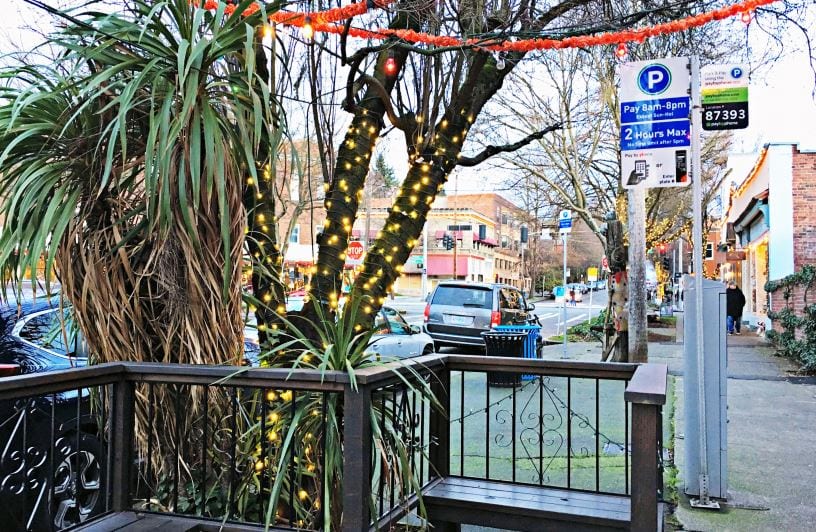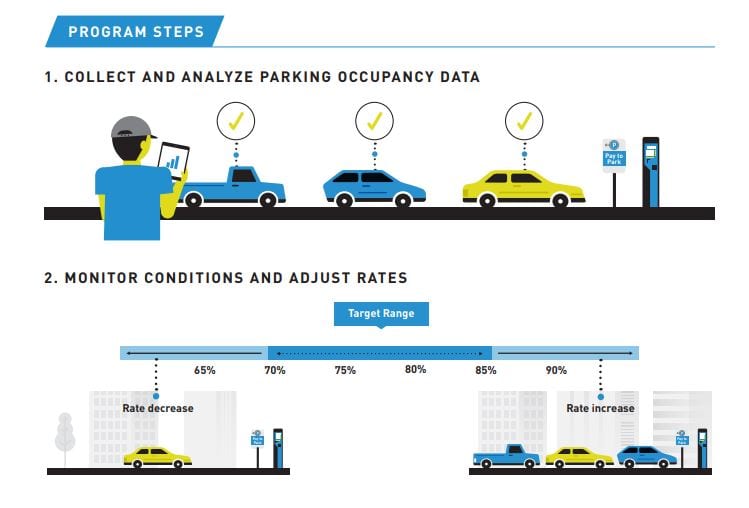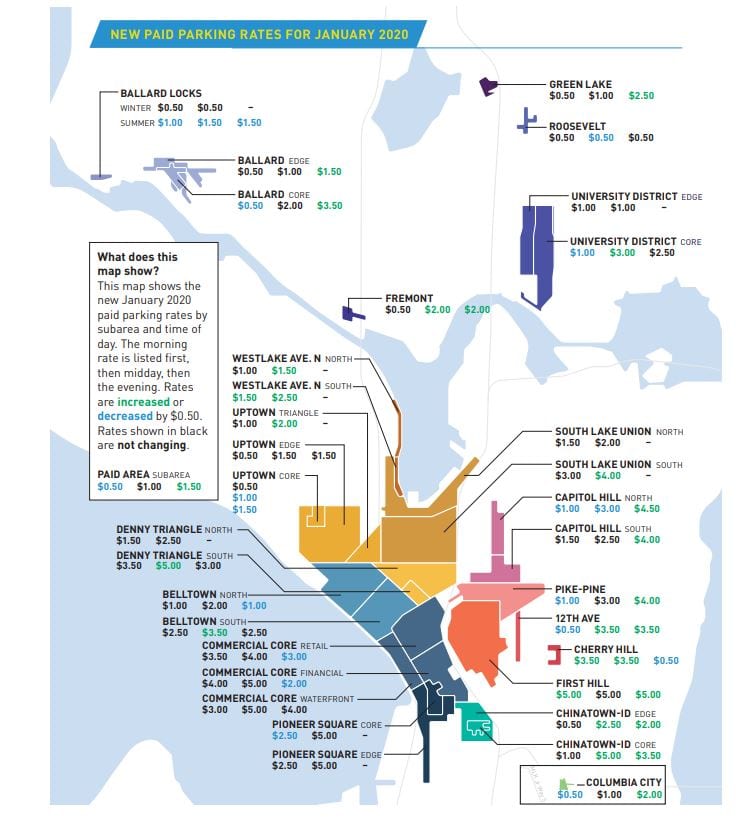Are parking prices near the places you frequent going up or down? Find out!
This week we started rolling out paid parking rate changes based on our 2019 Annual Paid Parking Study. 70% of rates will be lowered or remain the same!
We use data to help drivers more reliably find short-term on-street parking.
Every year since 2010, the Performance-Based Parking Pricing Program has assessed parking supply and demand to inform annual rate decreases and increases. The goal is to adjust rates so that one or two parking spaces are available on each block throughout the day so drivers have reliable access to the curbspace and businesses can rely on parking for their customers.
Our process is straightforward.
Every year we gather hourly parking occupancy data on every paid block so that we can adjust rates by neighborhood and by time of day: morning, midday, and evening. We generally lower rates where and when there are fewer cars parked and increase rates where and when street parking is overly full. We make annual rate changes in 50-cent increments.
For example, parking occupancy in the Green Lake business district is traditionally low in the mornings and higher in the evenings. The trend continued in 2019, so we will increase the evening rate after 5 PM to $2.50/hour (up from $2.00/hour). The morning rate is already at the lowest allowed at $0.50, which will remain.
In downtown and neighborhood business districts with paid parking, the bottom-line measure of curb performance is the average level of use and availability of spaces. Our goal is to make it efficient and accessible for people who need to drive to find a parking space. This reduces how much time drivers spend circling for parking, which provides other important benefits:
- Improves safety for pedestrians and cyclists – drivers circling for parking are often distracted
- Reduces congestion – drivers circling for parking contribute to congestion
- Improves transit efficiency – less congestion and fewer cars stopping in the bus lane means our public transit is more reliable
- Decreases greenhouse gas emissions – less circling means fewer emissions
About half of the 92 parking areas/time periods we reviewed will have rate changes.
- 47 will have no rate change (current curb performance is meeting our goal)
- 27 will have a $0.50/hour rate increase (street parking in 2019 was overly full)
- 18 will have a $0.50/hour rate decrease (street parking in 2019 was under utilized)
Find out where rates will decrease or increase and at what time of day.
Visit our Paid Parking Map for more details. Questions? Contact DOT_PayStations@seattle.gov


